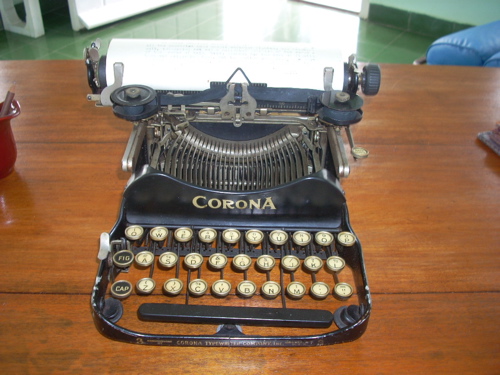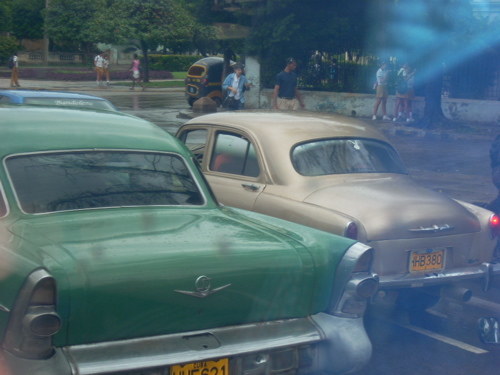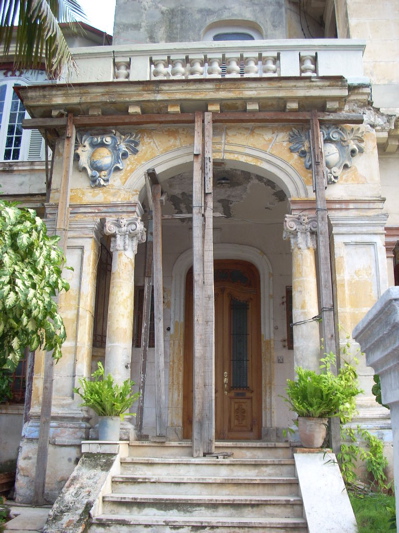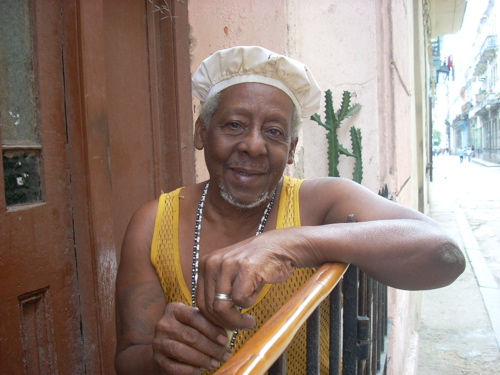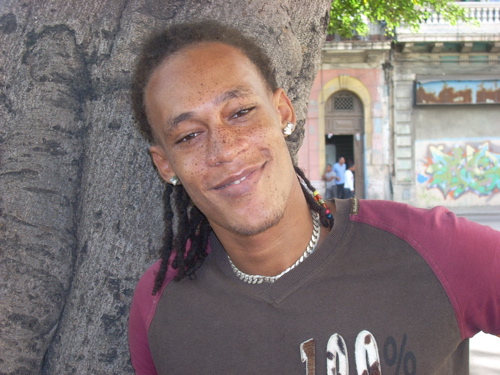The mid-century Pontiacs and Plymouths, painted in pulsating colors, patched together with wire and wishes.
This is Havana.
Mediterranean mansions facing tree-lined avenues, their facades now crumbling beneath the weight of unfulfilled dreams, their stained-glass windows smashed like the hopes of their occupants. This is Havana.
All homes are government owned. If you want to move, you go down to the Prado - a wide boulevard on the edge of Old Havana - and take part in the Saturday afternoon human Craig's List of people wishing to trade their abode for another. No money may change hands.
The Havanese proudly tell you there is 100 percent literacy in their country. What they are less proud of is the lack - of food, of medical supplies, of material to repair the houses or the cars.
In Havana, one's senses are bombarded by the architecture, art, music -- by the sound of the waves smacking against the wall separating the city from the sea. That wall, which stretches along the Malecon, the city's seagirt boulevard, is the heart of Havana's social life. This is where lovers lean into each other and steal kisses, where families host weekend picnics, where philosophers lose themselves in reverie as they stroll toward Old Havana, now a UNESCO World Heritage Site.
One evening, we rode in a ramshackle taxi from Old Havana to the Nacional Hotel, as turbulent seas sent the waves crashing over the wall, filling the car with a salty mist. There was no way to roll up the windows; there were no window cranks on the doors. The driver reached down under the dashboard and blindly grabbed a crank rolling around the floor; we passed it among us, roaring with laughter. This is Havana.
We were in Havana on a humanitarian visa; we packed our luggage with medical supplies that we later gave to the Jewish community down there. Our luggage was also filled with office supplies -- file folders and binders, post-its and manila envelopes -- for Jose Viegas, who is organizing an archive of Cuban contemporary art in his modest home in Marianao; of all the exhibitions in the world featuring Cuban artists, he is only missing three catalogues. The trip was organized by Darrel Couturier, who owns the Couturier Gallery on La Brea Avenue in Los Angeles, and our real mission was to see and buy Cuban art and meet the artists producing it. Though you cannot legally import Cuban cigars or coffee into the United States, you can bring back art and music, which are classified as cultural assets by the U.S. government.
Couturier is a specialist in Latin American art and represents some of the most interesting artists presently working in Havana. During the day, our group of 10 got to know the city and its various neighborhoods via the wisdom and good nature of our guide, Jorge, but mainly by trekking from one artist's home/studio to another's. Some like Raul Cordero, a painter and video artist, and Ibrahim Miranda, a painter and master print maker, live in small apartments in Vedado, where the living area consists mainly of a bed and stove, and which space was mostly relegated to a place to make art.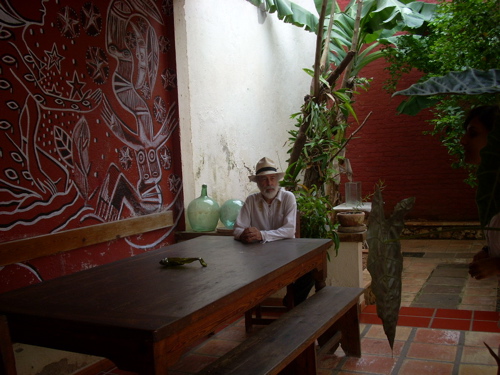
The Cuban artists of this caliber -- represented by galleries around the world -- are considered wealthy in their country; their works sell from a few hundred dollars up into the thousands. A Roberto Fabelo oil painting recently sold at Sotheby's for $50,000; I bought one of his iconic works on brown wrapping paper, an artist's proof of an edition of four prints, for $800.00.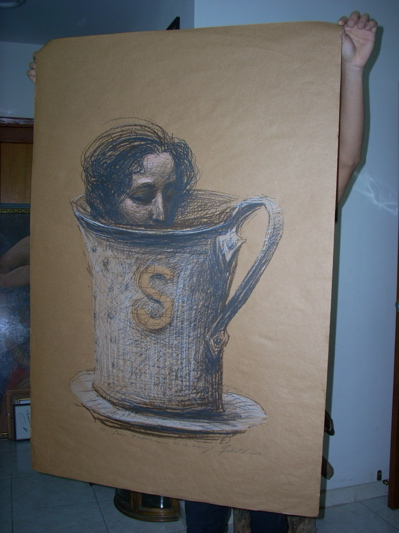
The artists in Cuba are considered part of the country's patrimony and the artists have a privileged life and can travel relatively freely. Musicians like Roberto Carcasse and Descemer Bueno seem to play every other week in Miami, and many of Couturier's artists come to Los Angeles for their openings in his gallery. Last week Kadir Lopez was in Los Angeles for the opening of his show at the William Turner Gallery. Though the average Cuban -- someone like Jorge, our guide, who speaks several languages and who used to teach at the medical school --- can only dream of visiting the world, the artists seem to have no trouble getting permission to do so.
And yet the Cubans seem so happy. 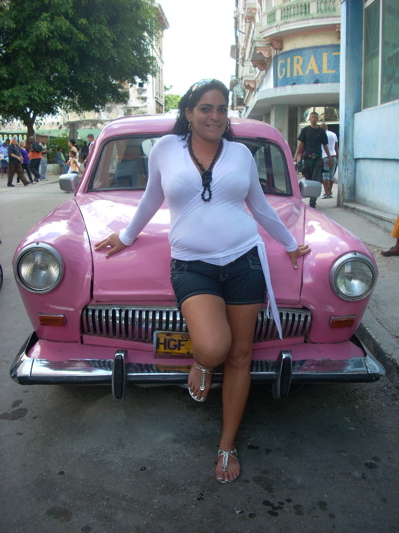 The shelves in the grocery stores are as bare as those I saw in Moscow when I visited after Perestroika, yet the Cubans are neither envious nor covetous.
The shelves in the grocery stores are as bare as those I saw in Moscow when I visited after Perestroika, yet the Cubans are neither envious nor covetous.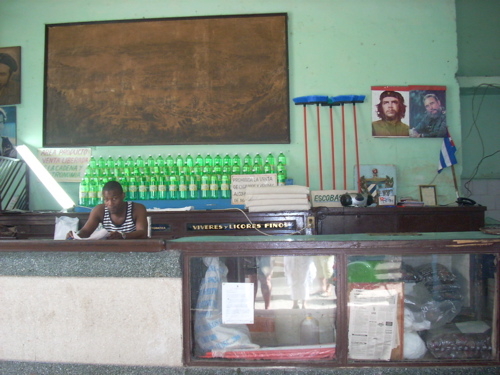
The Cubans wonder if and how the election of Obama could conceivably change their fate. Might the embargo be lifted, they ask? Might they soon be able to travel to the States? Jorge proudly shows me a photo on his cell phone of New Orleans mayor Ray Nagin with whom he spent a week recently as his guide. Nagin invited him to Louisiana. Would Jorge ever be able to go?
Havana seems firmly anchored in the past; nostalgia is everywhere. At the Tropicana nightclub, you can picture the mobsters of yore blowing cigar smoke in the faces of the statuesque showgirls sitting in their laps. You can imagine how, with its palm trees fanning the kidney shaped pool, the Hotel Nacional was once the grande dame of Caribbean Hotels.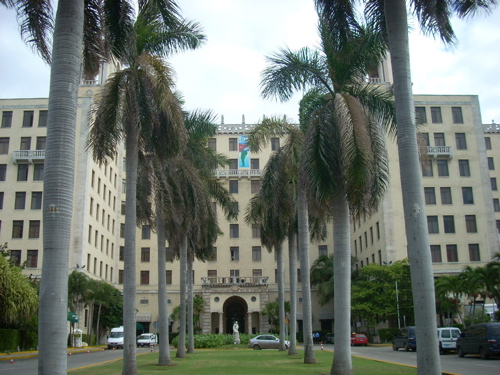
If you want to go to Havana, I would definitely recommend going with Couturier. It's a real "insider" experience, seeing the city through the lives of its artists. I loved staying at the Nacional, but would recommend staying on the executive floor, which gives you access to a private dining room where you can have breakfast or drinks. This will allow you to avoid the noisy, crowded downstairs dining room, which serves a mediocre breakfast buffet -- though by far the most sumptuous food selection I saw on the island -- and cappuccino from a machine.
Besides hanging out with artists like Cordero and Fabelo and talking art in their studios, some of my favorite moments in Havana were:
-Having cappuccino in the morning or drinks late at night on the terrace of the Nacional with the sea in the distance.
-Traveling by horse and buggy through the narrow streets of Central Havana, a run down section of town visited by few tourists.
-Seeing a Roberto Fabelo brown wrapping paper construction on the wall of the Museum of Fine Arts the day after I bought one of his rare wrapping paper prints.
-Venturing out alone at night to hear some young musicians I met on Facebook play at a club in Playa.
-Walking around old Havana, day or night: the colors, the faces, the smiles.
And, believe it or not, visiting Hemingway's house outside of Havana and seeing the typewriter at which he wrote standing up.